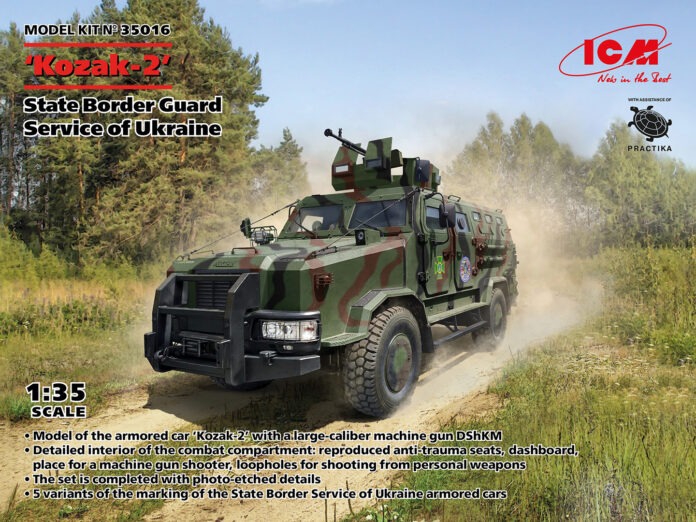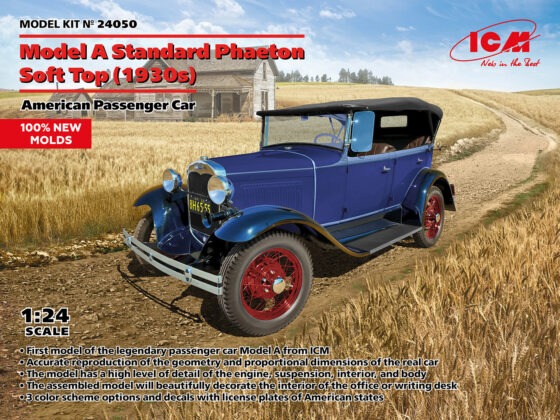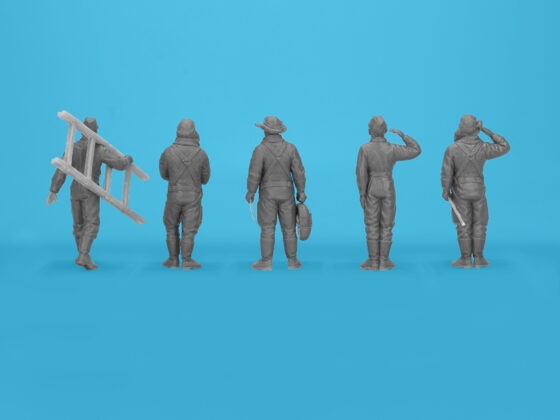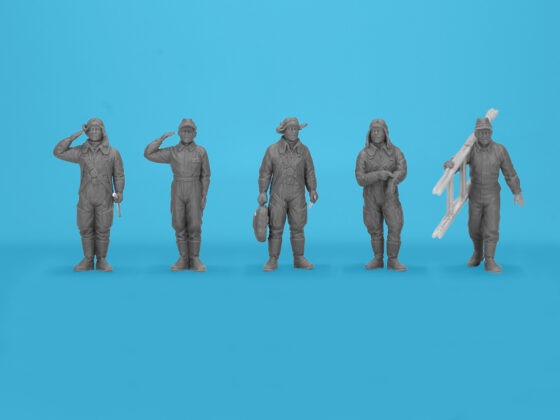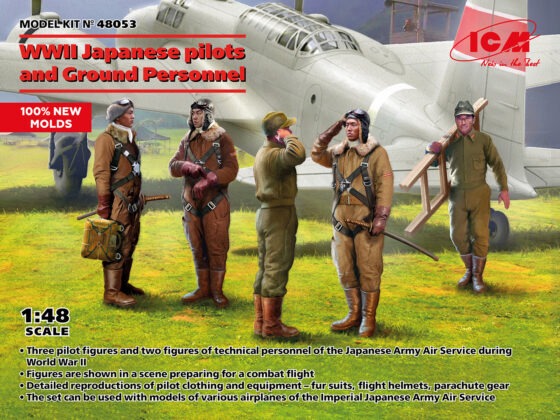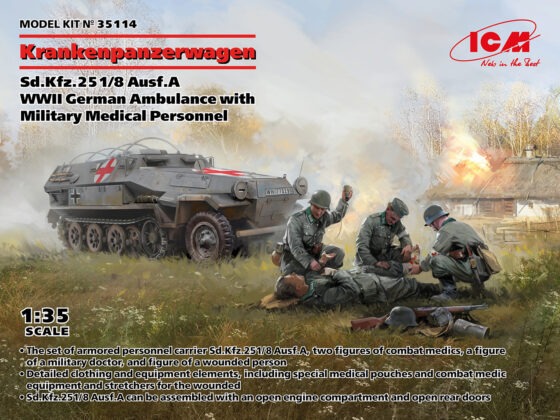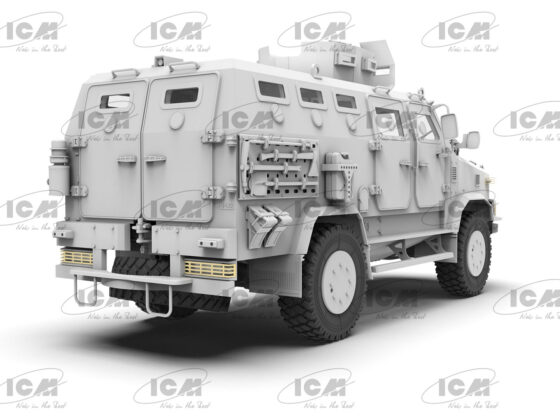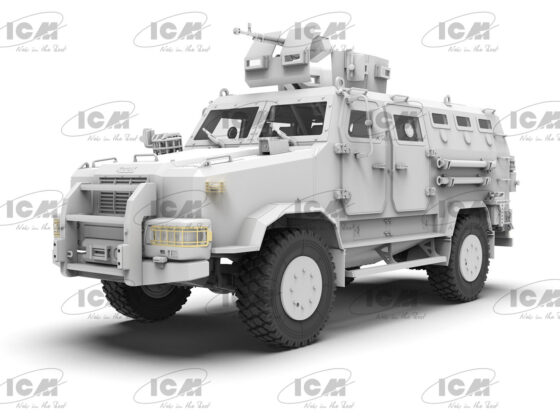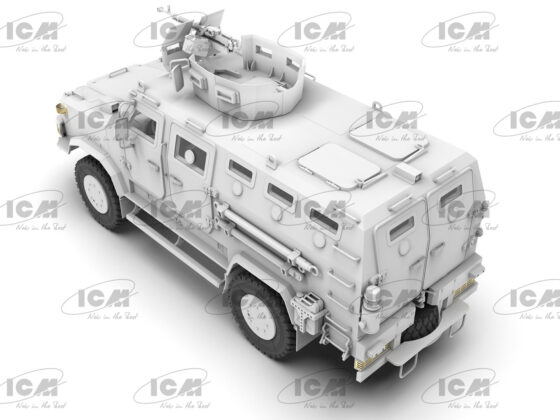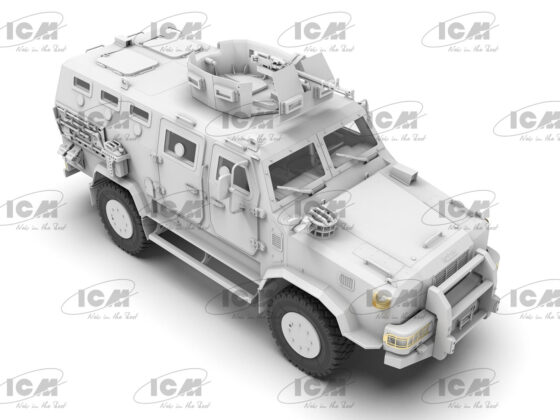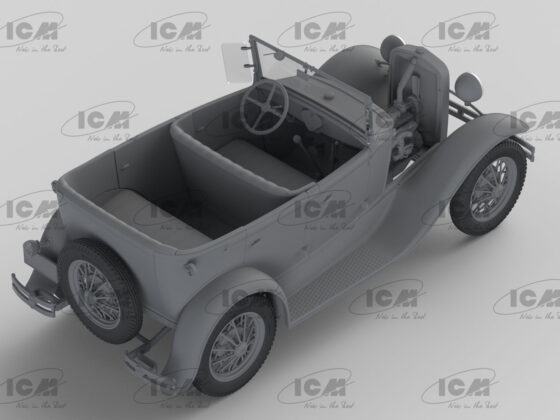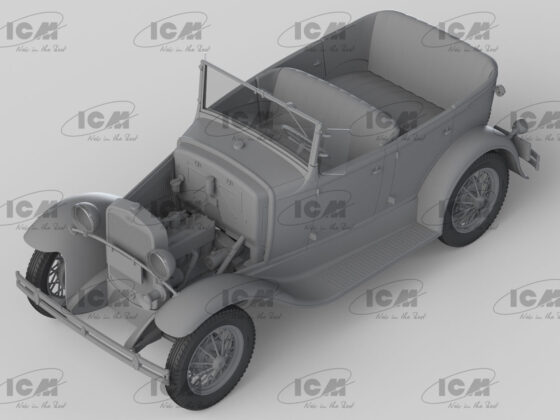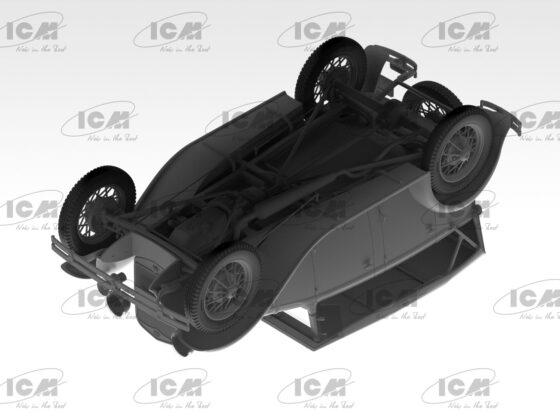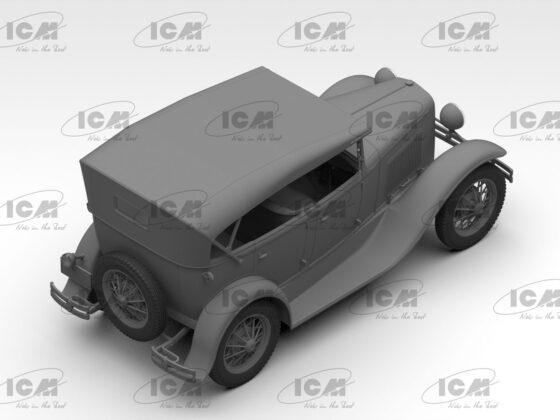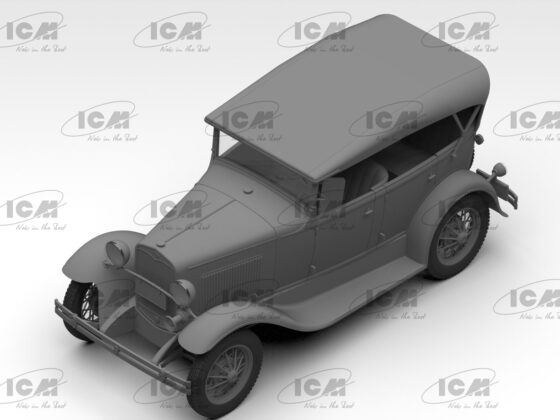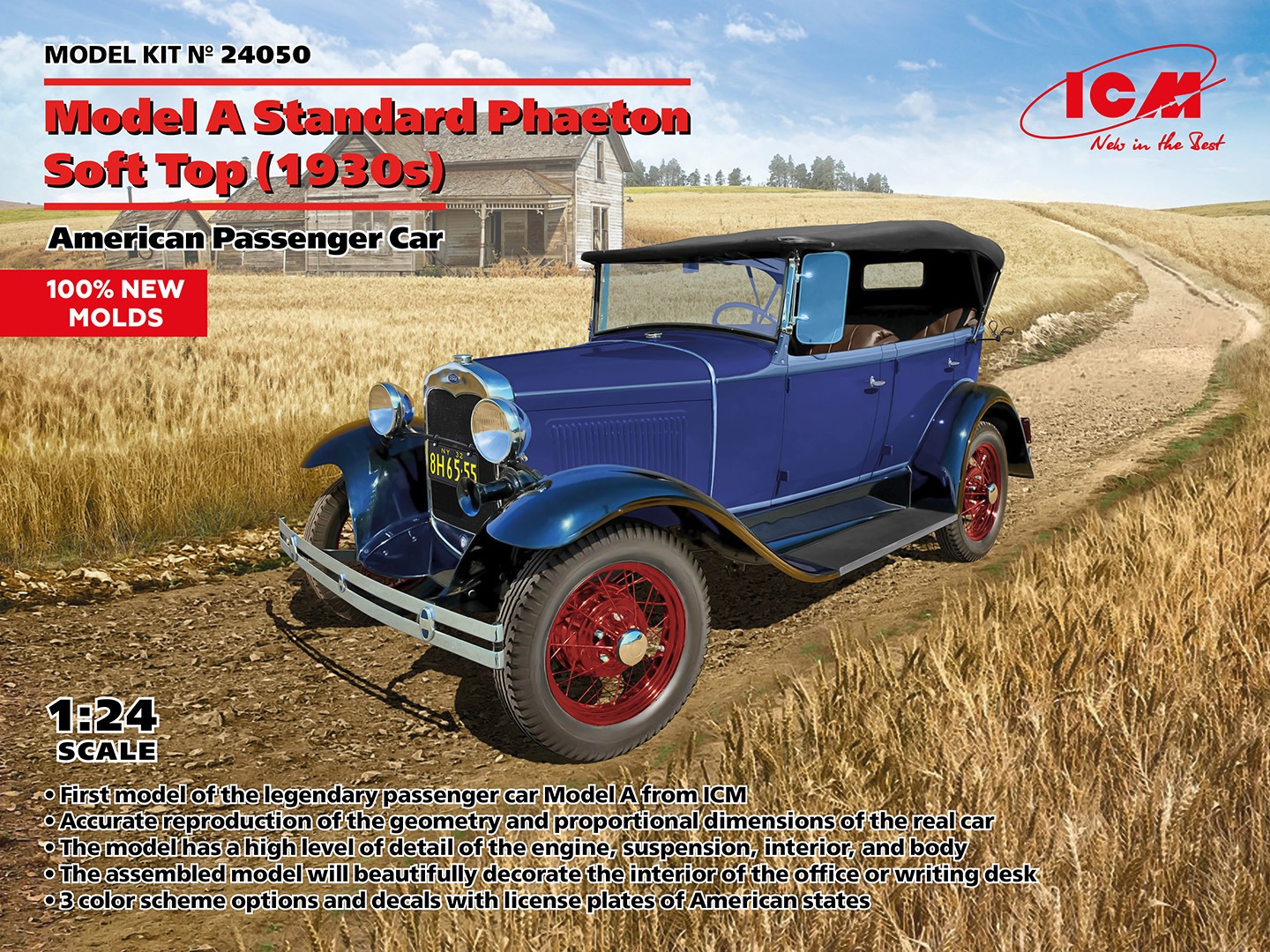 1/24 Model A Standard Phaeton Soft Top (1930s)
1/24 Model A Standard Phaeton Soft Top (1930s)
American Passenger Car
In the 1920s, American entrepreneur and car designer Henry Ford began developing a new car model to replace the famous Ford Model T, which had been produced for 18 years. According to legend, the first drawing of the future car was made by Henry Ford’s son, Edsel. At least, it was he who made sketches of the design options for the radiator and the car dashboard. The first copy of the new car, designated as the Ford Model A, was produced on October 20, 1927, and mass production began in December of the same year. During the production run, Ford made changes to the design of the car, the main of which were associated with the installation of a body with more space and improving its appearance. Cars produced after 1930 had a modified outside radiator, a new shape of the front wheel wings, and reduced wheels. Buyers were offered a large number of different options, among which it was possible to choose different types of body: coupe, convertible, sedan, phaeton, roadster, pickup, and others. Production of the Ford Model A ceased in 1931. A total of 4,849,340 Ford Model A models were produced in all variants.
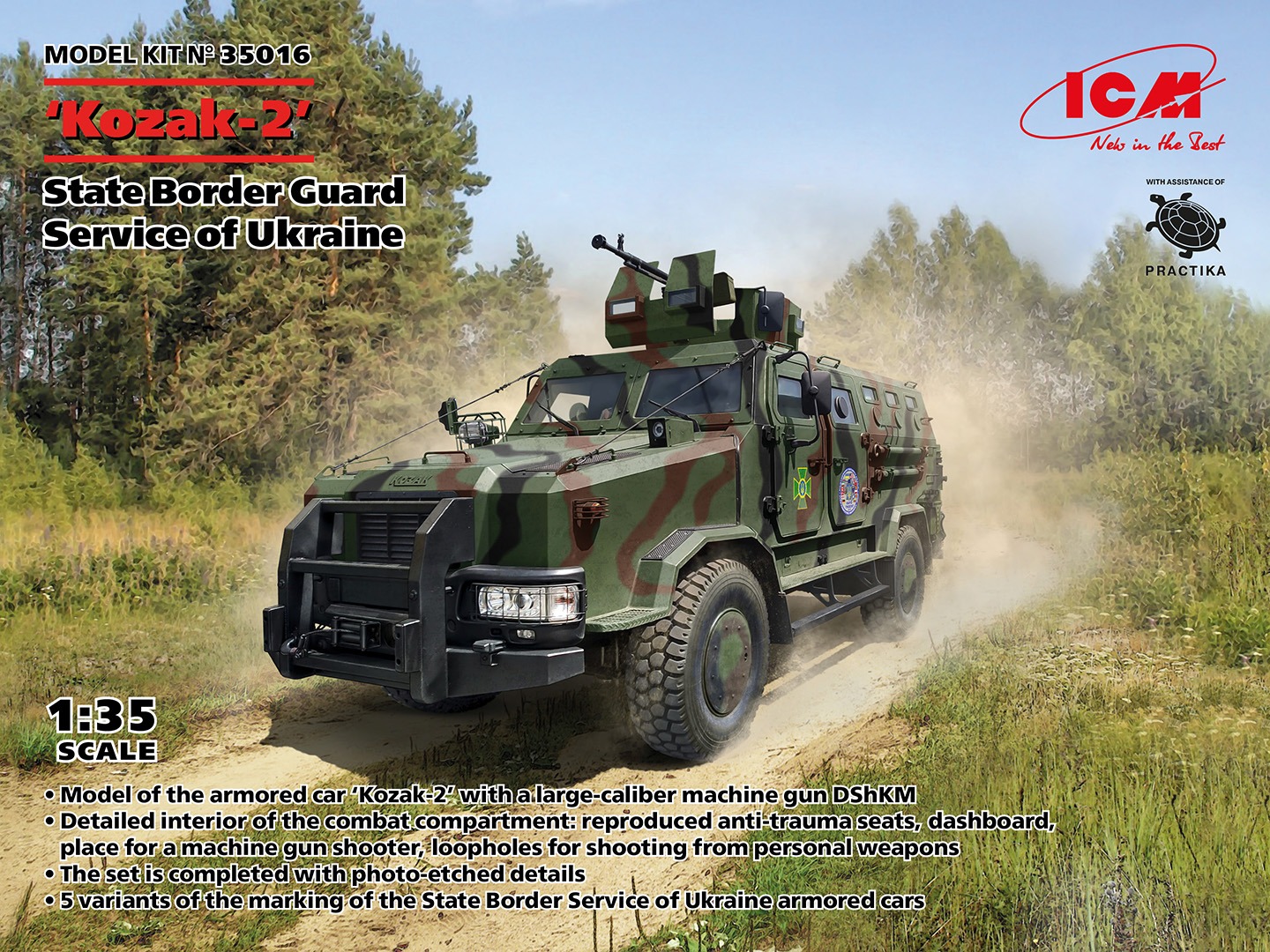 1/35 ‘Kozak-2’ State Border Guard Service of Ukraine
1/35 ‘Kozak-2’ State Border Guard Service of Ukraine
The ‘Kozak-2’ armored car, belonging to the State Border Guard Service of Ukraine, was developed by the Ukrainian enterprise ‘Scientific and Production Association ‘Praktika” in 2009. Initially, a prototype named the SRM-1 ‘Kozak’ was produced, but mass production was not initiated at that time due to several reasons. Subsequently, in 2014, specialists from Praktika began designing a new armored car based on the Kozak SRM-1, using the Iveco Eurocargo chassis. By spring 2015, the Kozak-2 variant was introduced. This armored vehicle falls into the MRAP class of combat vehicles, designed to protect the crew from mines and ambushes. Its functionalities include patrolling, vehicle escorting, communications, and providing fire support for personnel in battle. The crew is protected by armor from small arms fire with a caliber of 7.62 mm, ammunition fragments, and mines. The vehicle is equipped with anti-traumatic seats fitted with five-point seat belts for the crew and passengers. The armament options for the Kozak-2 include various types of machine guns. Armored vehicles utilized by the State Border Guard Service of Ukraine are equipped with DShKM heavy machine guns as weaponry. These machine guns are highly effective and can successfully engage even armored vehicles.
 1/35 Krankenpanzerwagen
1/35 Krankenpanzerwagen
Sd.Kfz.251/8 Ausf.A WWII German Ambulance with Military Medical Personnel
The platoons, companies, and battalions of the Wehrmacht included combat doctors who provided direct medical assistance to the wounded. Infantry companies also had individual non-commissioned officers of the medical service, and at the battalion level, a military doctor (Assistenzarzt or Oberarzt) was responsible for centralized medical care. Wehrmacht combat doctors were also responsible for evacuating the wounded to first aid points or collection points. Armored transporters could be used for evacuation, one of which was a special medical armored personnel carrier designated as the Sd.Kfz.251/8 or ‘Krankenpanzerwagen.’ This armored personnel carrier could carry various numbers of wounded, for which it had special stretchers and seats inside. Additionally, semicircular rails were installed on top of the hull for an awning to protect from the weather. Armored medical transporters were part of the headquarters company (Stabskompanie). For visual differentiation from standard vehicles, these transporters had large signs with a red medical cross.
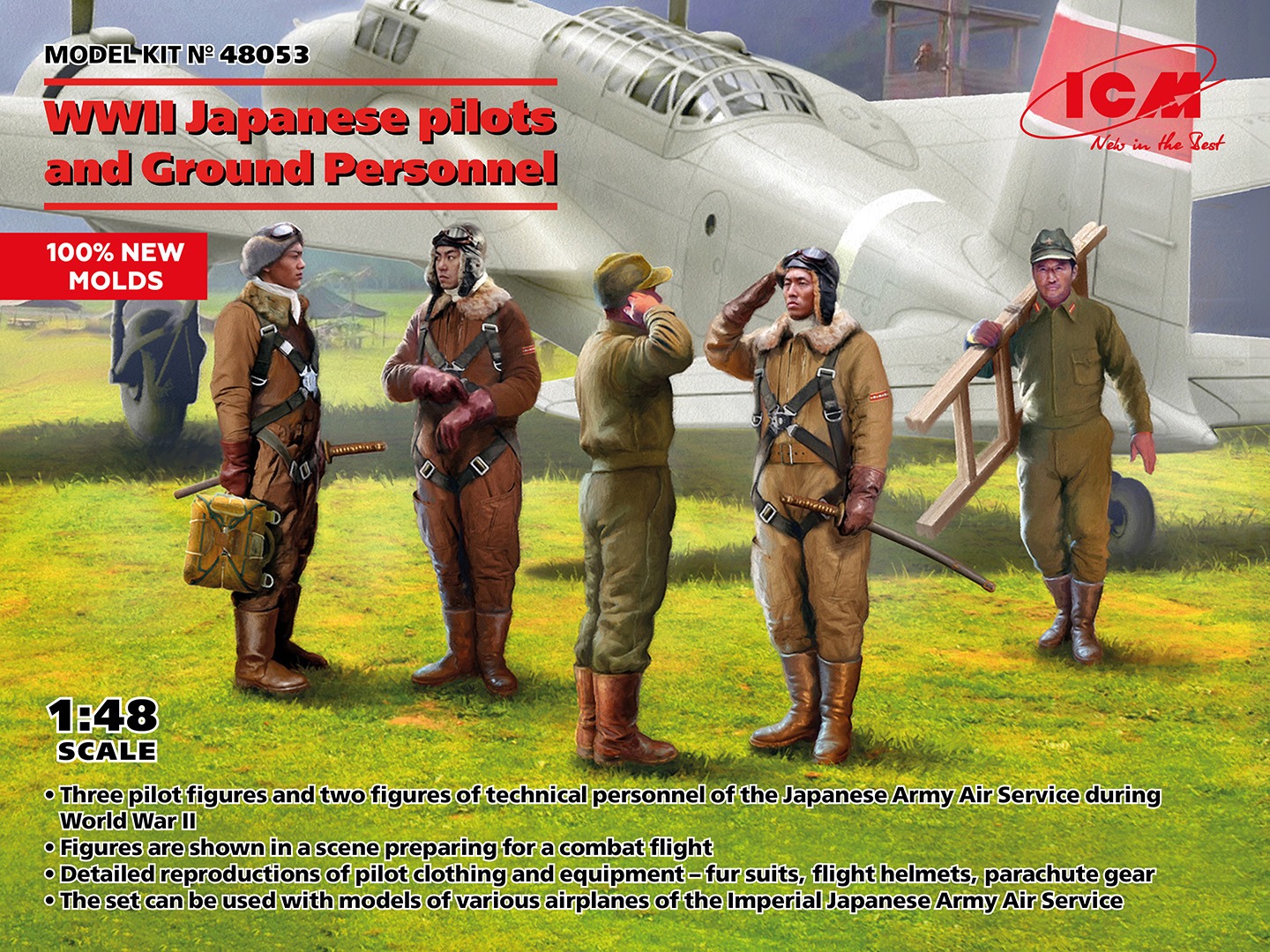 1/48 Japanese pilots and Ground Personnel WWII
1/48 Japanese pilots and Ground Personnel WWII
The aviation of Imperial Japan during World War II were organizationally part of the ground forces and navy. In 1940, the army’s aviation units numbered 36 fighter, 50 bomber, and 29 reconnaissance squadrons, and their personnel numbered 33,000 officers and lower ranks. The functions of army aviation included providing support for ground units and combating enemy aircraft. Structurally, it consisted of five air armies, each with a specific combat area. For better coordination between the Army and Air Force, at each of the theaters of operations, the air units were subordinated to the respective ground command. The uniform of Japanese Air Force personnel mirrored that of the army, with certain elements of clothing in blue. The special flight uniforms for Japanese pilots were divided into summer and winter attire, with military rank insignias worn on the sleeves or chest.
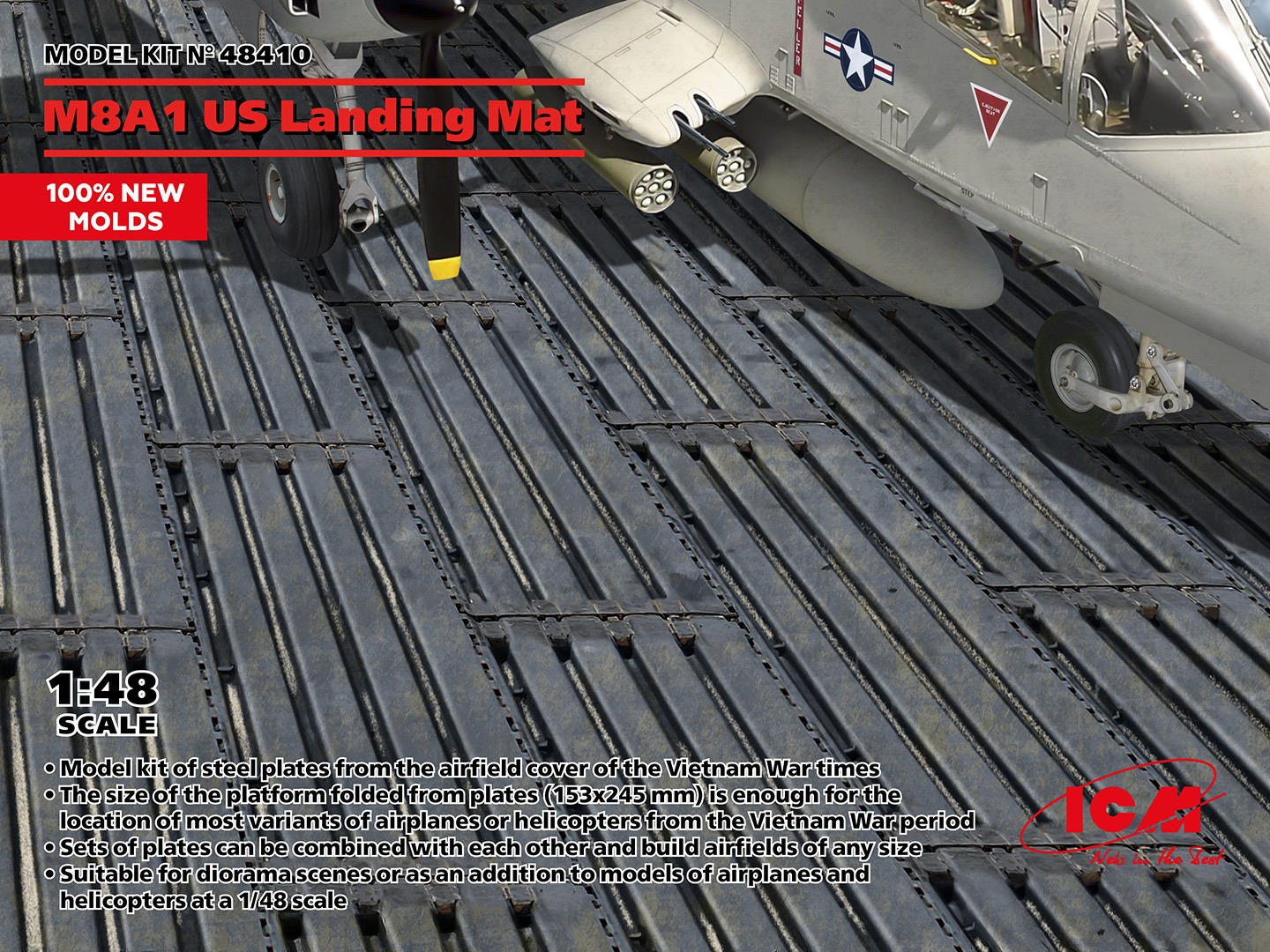 1/48 M8A1 US Landing Mat
1/48 M8A1 US Landing Mat
To quickly build temporary runways, US engineering services built various options for the airfield. Aerodrome steel plates were M8A1 used in the Vietnam War in the second half of the 1960s and early 1970s and were installed by engineering units of the US Army. Plates were connected to each other either staggered or in a row and allowed to build either separate small sites or airfields of impressive size. Most often, such coatings were used in army aviation. Various aircraft could be based on the sites created in this way, for example, combat helicopters AN-1Q Cobra, light attack aircraft, and observation aircraft OV-10A Bronco or O-2 Skymaster. Also on such sites were operated well-known B-26K Counter Invader.
HobbyLink International
Hoblylink International Shop
eBay Store



